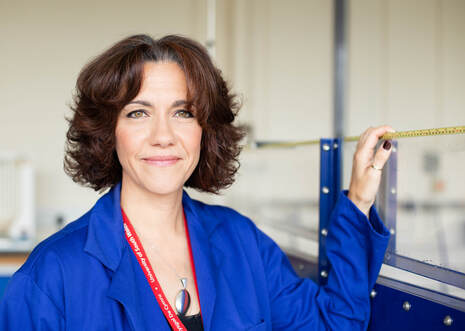|
|
Professor Karen M Holford, Deputy Vice Chancellor and Professor of Engineering, Cardiff University |
|
Rhian Kerton, Head of Learning, Teaching and Student Experience, University of South Wales |
My daughters are very able in maths and have always had fantastic additional support from their primary school to ensure that they are challenged. I remember my older daughter coming home from primary school one day to tell me that her teacher could no longer stretch her in maths so they were planning to bring in someone external once a week with higher maths skills. Fantastic, I thought. On chatting about this some more though it was clear that the message she had actually understood was that her female maths teacher wasn’t very good at sums so they were going to bring in a man. And this is despite having an engineer for a mother!
Having been into a number of schools as a STEM ambassador it is so clear that the message needs to get out to the next generation when they are very young. In my personal career journey, I have never experienced any negative gender bias. What I have seen is that it’s more about not enough women wanting STEM careers than women wanting them and being told they don’t make the grade. Strong female role models are key, seeing a successful woman in STEM could make all the difference to young girls and women wondering whether they have what it takes. Having an inspiring mentor will encourage women to believe ‘that could be me’. |
|
Dr Luan Al-Haddad – Lecturer in Civil Engineering Lecturer, University of South Wales |
My fascination with science and construction was evident at an early age. As a child, I spent most of my time designing and building, using any tools I could borrow from my dads shed. I had always had a passion for taking things apart to analyse how they worked and then putting them back together – not always in the right order!
I enjoyed maths and science as a child, despite the fact that it never came particularly easy to me, but undertaking a degree in Civil Engineering and Mathematics made me realise I could visualise mathematics in this very applied field. This I found furthered my passion and understanding where I could suddenly see maths in action. It was when I started my PhD and began teaching that I really started to understand how mathematics and science fit into the real world. My PhD was based on Artificial Neural Networks and their use in identifying and classifying based on morphological characteristics. Despite the biological application, the basis of the networks were computerised mathematical algorithms and I was later employed in a forensic field to assess how these could be used in drugs analysis. I spent ten years as a scientific research manager and for the last two of those years I returned part time to my passion of applied mathematics in the field of Water Engineering. For the last ten years I have been lecturing applied mathematics topics in the field of Civil Engineering with most of my focus being in Hydraulics and Hydrology. I have also spent five years as a placement tutor for students wishing to undertake an industrial placement year during their degree. It is reassuring to see more women entering into this career and undertaking senior management roles in the field of engineering. Although this field does not yet have a balance of male and female engineers, I have never felt disadvantaged or treated differently as a woman, particularly as it has been my privilege to meet and work with some incredible female trail blazers in the STEM subjects areas! |
|
Jacqui Murray is the Deputy Challenge Director of the UK Government’s £274 Million Faraday Battery Challenge - making the UK the go-to place for researching, developing, prototyping and manufacturing batteries for Electric Vehicles. It is the biggest challenge in the Industrial Strategy. |
I used to tell people I was an engineer. I found it uncomfortable to be described as a woman engineer – it felt like it singled me out away from my team.
That all changed one day in London in 2014. I went to a Women’s Engineering Society Conference on Energy. I must admit, that at that time, I wasn’t looking forward to being in a room with 250 women engineers. I walked into a diverse, competent, inspiring bunch of people. I remember thinking in the middle of the first break – what if being a woman engineer was an advantage? What if being myself, the extrovert, emotional, passionate and sensitive woman could be something that made me a better engineer and someone who was easier to work with? And get better results? Perhaps stupidly, I realised all the things I had been agreeing with on Coaching and Emotional Intelligence training, I hadn’t really been embracing for myself! By the end of the day, I had signed up as a STEM ambassador to and pledged to be the forty-something woman that the twenty-something year old me needed. Ever since, I tell my story in equality, diversity and inclusion (EDI), focussing on the positive performance of a diverse team and the leadership that inclusion requires. I tell engineers to run the numbers provided by the Royal Academy of Engineering and McKinsey and share tools from these courses that I have found most useful. My current Faraday Battery Challenge team is high performing, high profile, fun and diverse. We all speak about inclusion and always prioritise people. I have stayed true to my original pledge, aiming to give others tools to build confidence and conflict competence. I am proud to claim that since that date I have :
Just sometimes Karma rocks. |




